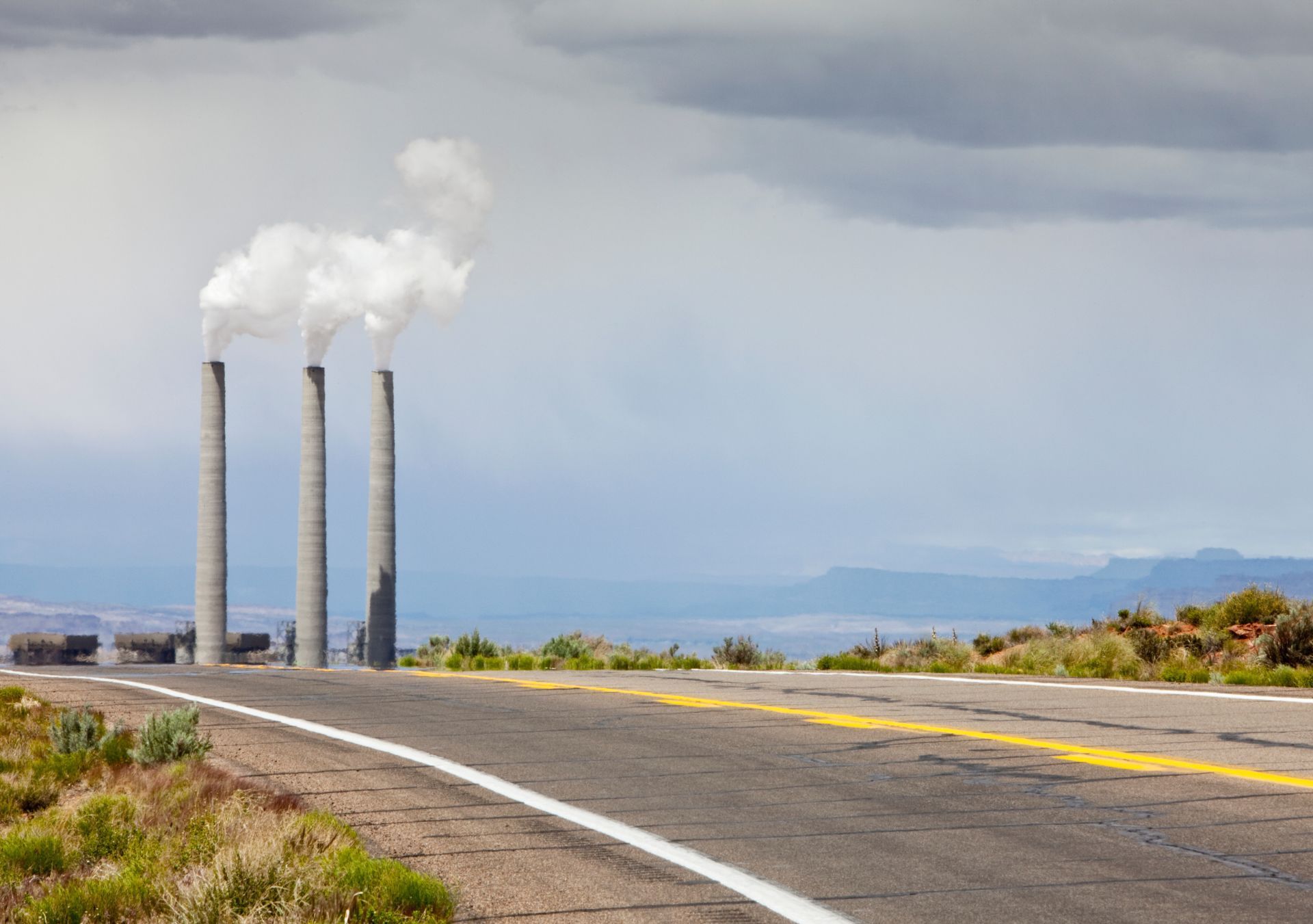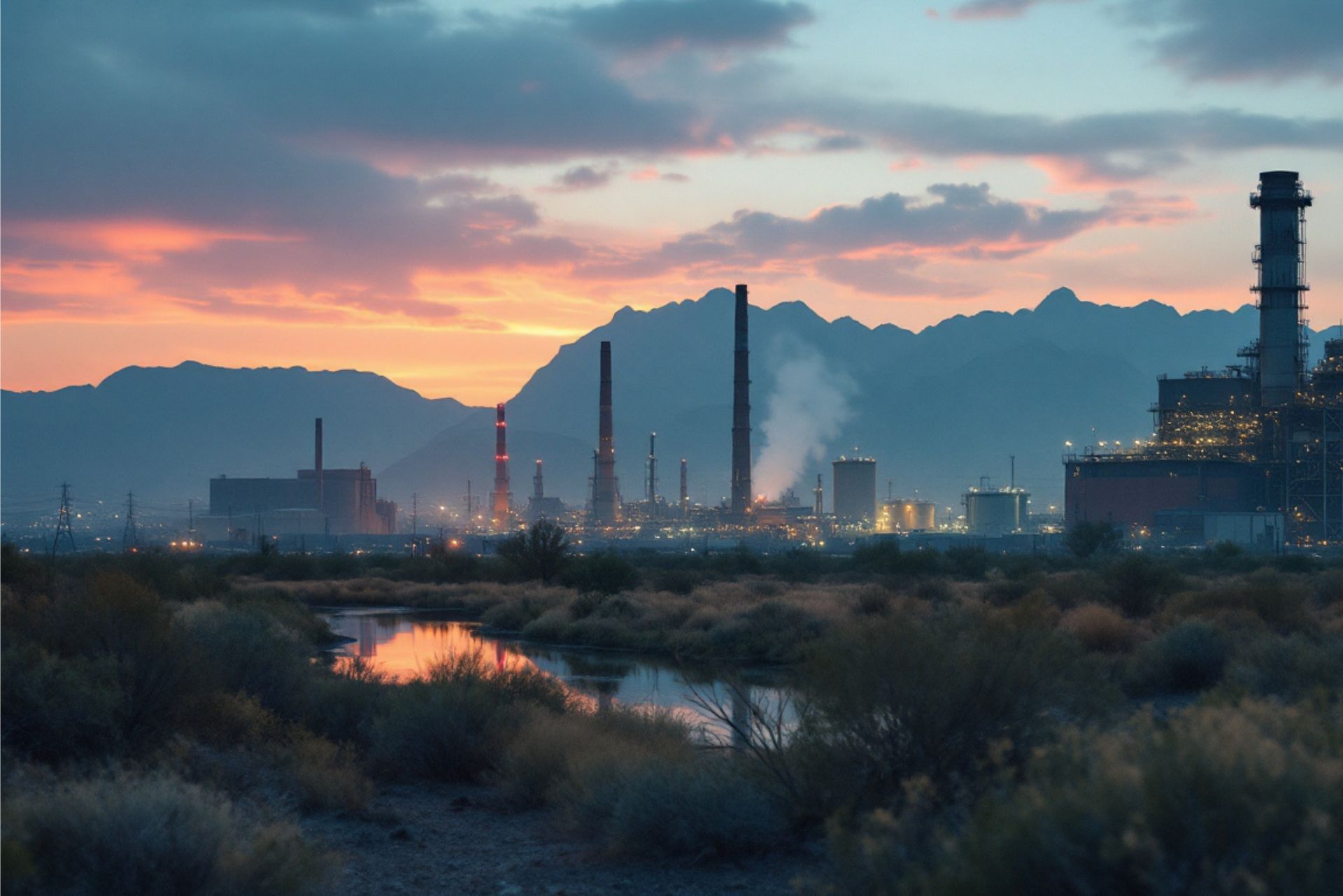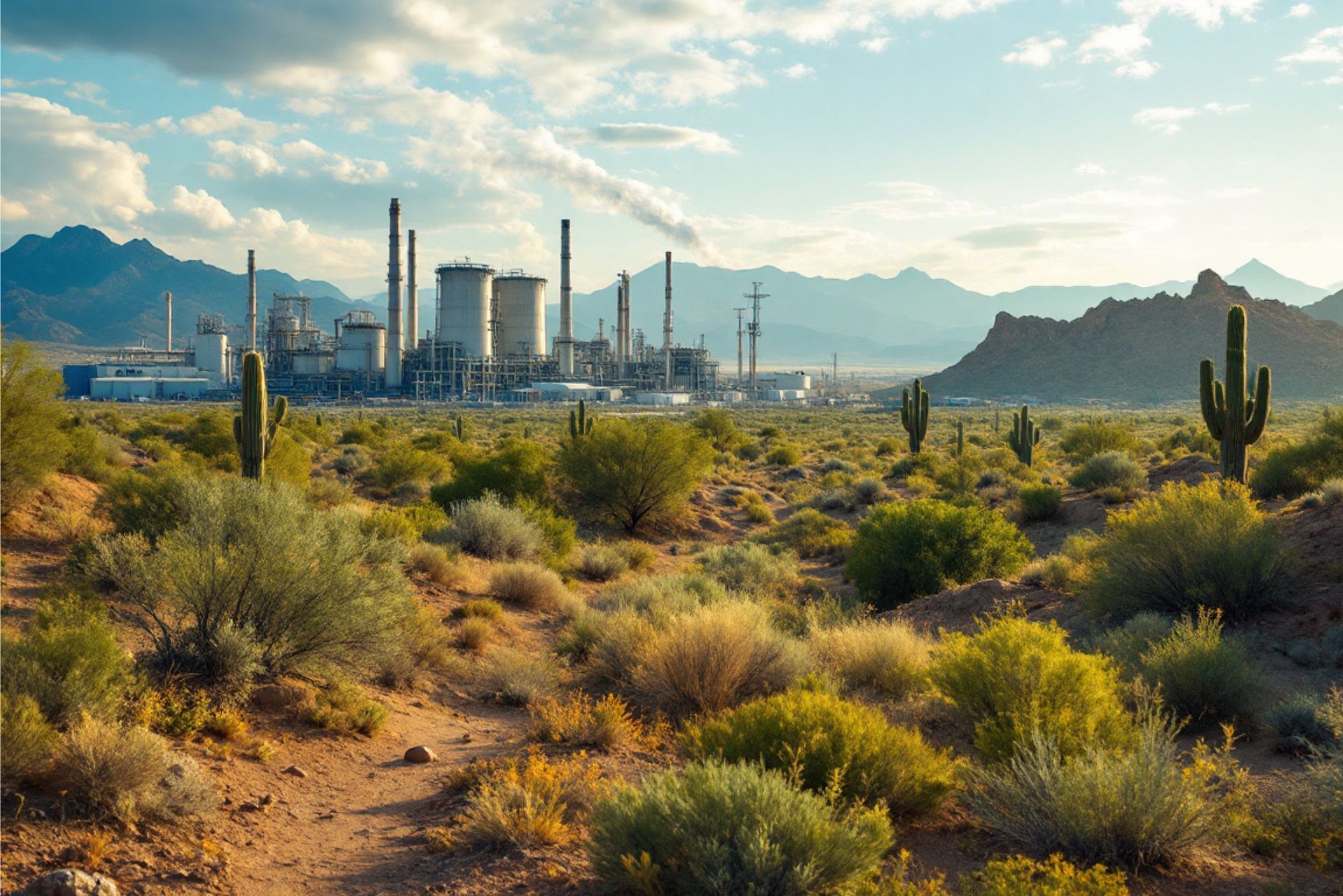Arizona Pollution Liability Insurance
See How We're Different:
or Call Us:(480) 526-3222

Most Common Business Policies
Index
Understanding Pollution Liability Insurance
Types of Pollution Liability Insurance
Factors Influencing Pollution Liability Insurance Costs
How to Choose the Right Pollution Liability Insurance
Common Exclusions in Pollution Liability Insurance
The Claims Process for Pollution Liability Insurance
Regulatory Considerations in Arizona
Contact Us
In recent years, the importance of environmental protection has gained significant traction, especially in states like Arizona, where natural beauty and ecological diversity are abundant. As businesses operate within this landscape, the need for pollution liability insurance has become increasingly critical. This article delves into the essentials of pollution liability insurance in Arizona, covering its necessity, types, coverage options, and more.
Understanding Pollution Liability Insurance
Pollution liability insurance is designed to protect businesses from the financial repercussions of pollution-related incidents. It covers costs associated with cleanup, legal fees, and damages related to environmental contamination. This type of insurance is particularly vital for industries that handle hazardous materials, such as manufacturing, construction, and waste management.
Why is Pollution Liability Insurance Important?
The significance of pollution liability insurance cannot be overstated. With increasing regulatory scrutiny and public awareness regarding environmental issues, businesses face heightened risks of lawsuits and penalties. A single incident can lead to substantial financial losses, making this insurance a crucial safety net.
Furthermore, many clients and partners now require proof of pollution liability coverage before entering into contracts. This requirement underscores the growing recognition of environmental responsibility in business practices. In today’s marketplace, companies that prioritize sustainability and demonstrate a commitment to environmental stewardship often gain a competitive edge. By securing pollution liability insurance, businesses not only protect themselves financially but also enhance their reputation as responsible corporate citizens.
Key Components of Pollution Liability Insurance
Pollution liability insurance typically includes several key components. These may encompass coverage for bodily injury, property damage, and cleanup costs arising from pollution incidents. Additionally, it often covers legal defense costs and claims made against the insured party.
Understanding these components helps businesses tailor their policies to meet specific needs, ensuring comprehensive protection against potential environmental liabilities. For instance, some policies may offer coverage for sudden and accidental pollution events, while others could extend to gradual pollution incidents that occur over time. This distinction is crucial for businesses to consider, as it can significantly impact their risk exposure. Moreover, many insurers provide optional endorsements that can enhance coverage, such as protection against third-party claims or coverage for transportation-related pollution, which can be especially relevant for logistics and transportation companies.

Types of Pollution Liability Insurance
In Arizona, businesses can choose from various types of pollution liability insurance, each tailored to different operational needs. Understanding these options is crucial for selecting the right coverage.
Site-Specific Pollution Liability Insurance
This type of insurance is designed for businesses that operate on a specific site, such as factories or warehouses. It provides coverage for pollution incidents that occur on the insured property. Site-specific policies are particularly beneficial for businesses involved in manufacturing or those that handle hazardous materials regularly. For instance, a manufacturing plant that discharges waste into nearby water sources may face significant liabilities if an environmental incident occurs. By having site-specific pollution liability insurance, the business can mitigate the financial impact of cleanup costs, legal fees, and any fines imposed by regulatory agencies.
Moreover, site-specific policies often include provisions for environmental assessments, which can help businesses identify potential risks before they escalate into serious issues. This proactive approach not only safeguards the environment but also enhances the company's reputation among stakeholders and the community.
General Liability Insurance with Pollution Coverage
Some general liability insurance policies include pollution coverage as an endorsement. While this can provide some level of protection, it is essential to review the policy details carefully. General liability insurance may not cover all pollution-related incidents, so businesses should assess their risks and consider additional coverage if necessary. For example, if a business is involved in transporting goods that could potentially leak harmful substances, relying solely on general liability insurance may leave significant gaps in coverage.
Furthermore, businesses should be aware that pollution incidents can lead to long-term environmental damage, which may not be immediately apparent. Therefore, having a comprehensive understanding of what is included in the general liability policy, as well as the limits of pollution coverage, is vital. Engaging with an insurance professional can help clarify these details and ensure that businesses are adequately protected against unforeseen pollution liabilities.
Contractual Pollution Liability Insurance
Contractual pollution liability insurance is often required by clients or partners, particularly in construction or environmental services. This policy covers pollution claims arising from contractual obligations, ensuring that businesses are protected while fulfilling their contractual duties. For instance, a construction company hired to build a new facility may be required to carry this type of insurance to protect against any pollution incidents that could arise during the project, such as accidental spills or contamination of the site.
Additionally, having contractual pollution liability insurance can enhance a business's credibility and competitiveness in the marketplace. Clients are increasingly concerned about environmental risks, and demonstrating that a business has the appropriate insurance can be a deciding factor in securing contracts. This type of coverage not only protects the business but also fosters trust with clients and partners, contributing to long-term relationships and potential future projects.
Factors Influencing Pollution Liability Insurance Costs
The cost of pollution liability insurance can vary significantly based on several factors. Understanding these factors can help businesses make informed decisions when selecting coverage.
Industry Type
The type of industry plays a crucial role in determining insurance costs. Industries that handle hazardous materials or have a higher risk of pollution incidents, such as manufacturing or waste management, typically face higher premiums. Conversely, businesses in lower-risk industries may enjoy more affordable rates. For instance, companies involved in agriculture may also encounter unique challenges, as they must navigate regulations related to pesticide use and runoff, which can affect their insurance costs. Additionally, emerging industries, such as renewable energy, may find that their insurance needs are evolving, requiring tailored policies that reflect their specific environmental impact.
Business Size and Revenue
Larger businesses with higher revenues often pay more for pollution liability insurance. Insurers consider the potential scale of operations and the associated risks. Smaller businesses may benefit from lower premiums, but they should still ensure adequate coverage for their specific needs. It's important to note that the geographical location of a business can also play a significant role in determining costs. For example, companies operating in environmentally sensitive areas or regions with stricter environmental regulations may face higher premiums regardless of their size. This underscores the importance of conducting a thorough risk assessment to understand how location can influence insurance needs.
Claims History
A business's claims history can significantly impact its insurance costs. Companies with a history of pollution-related claims may face higher premiums due to perceived risk. Conversely, businesses with a clean claims history may qualify for discounts, making it essential to maintain good risk management practices. Insurers often look for proactive measures taken by businesses to mitigate risks, such as implementing comprehensive environmental management systems or investing in employee training programs focused on pollution prevention. These initiatives not only enhance a company's reputation but can also lead to more favorable insurance terms, as they demonstrate a commitment to reducing potential liabilities.
How to Choose the Right Pollution Liability Insurance
Choosing the right pollution liability insurance requires careful consideration of various factors. Here are some essential steps to guide businesses in making informed decisions.
Assess Your Risks
Before selecting a policy, businesses should conduct a thorough risk assessment. This involves identifying potential pollution sources, evaluating operational practices, and understanding regulatory requirements. A comprehensive risk assessment enables businesses to determine the level of coverage needed to protect against potential liabilities. For instance, a manufacturing facility may face different pollution risks compared to a construction site, necessitating tailored coverage. Additionally, businesses should consider historical data on pollution incidents in their industry, as this can provide insights into potential future risks and help in crafting a more robust insurance strategy.
Consult with Insurance Professionals
Engaging with insurance professionals who specialize in environmental coverage can provide valuable insights. These experts can help businesses navigate the complexities of pollution liability insurance, ensuring they select a policy that aligns with their unique needs and risks. They can also assist in interpreting the fine print of insurance contracts, highlighting any potential gaps in coverage that might leave a business vulnerable. Furthermore, these professionals often stay updated on changes in environmental regulations and can advise businesses on compliance, which is crucial for minimizing liability exposure.
Compare Policies and Providers
Once businesses have identified their coverage needs, it is crucial to compare policies from different providers. Evaluating coverage limits, exclusions, and premiums will help businesses make informed choices. Additionally, reading reviews and seeking recommendations can provide insights into the reliability of various insurance companies. It is also beneficial to inquire about the claims process for each provider, as a smooth and efficient claims experience can be a significant factor in times of crisis. Some insurers may offer additional services, such as risk management consultations or training programs, which can further enhance a business's ability to mitigate pollution risks effectively.

Common Exclusions in Pollution Liability Insurance
While pollution liability insurance provides essential coverage, it is vital to understand common exclusions that may affect claims. Being aware of these exclusions can help businesses avoid surprises during the claims process.
Pre-existing Conditions
Most pollution liability policies exclude coverage for pre-existing conditions or incidents that occurred before the policy's effective date. Businesses should ensure that they disclose all relevant information during the application process to avoid complications later. This means conducting thorough audits and assessments of past operations to identify any potential issues that could be classified as pre-existing. Failure to do so may not only lead to denied claims but could also result in increased premiums or difficulty in securing coverage in the future.
Intentional Acts
Coverage typically does not extend to intentional acts of pollution or negligence. If a business knowingly engages in activities that could lead to pollution, any resulting claims may be denied. It is crucial for businesses to adhere to environmental regulations and best practices to maintain coverage. This includes implementing robust training programs for employees on environmental compliance and establishing a culture of accountability. Additionally, businesses should consider conducting regular risk assessments to identify potential intentional acts that could jeopardize their insurance coverage.
Gradual Pollution Events
Many policies exclude coverage for gradual pollution events, such as leaks or spills that occur over time. Instead, they often cover sudden and accidental incidents. Businesses should carefully review their policies to understand how gradual pollution is defined and whether additional coverage is necessary. Understanding the nuances of these exclusions can be critical, especially for industries where gradual pollution is a risk, such as manufacturing or waste management. Companies might also explore supplemental insurance options or endorsements that specifically address gradual pollution to ensure comprehensive protection against long-term environmental impacts.
The Claims Process for Pollution Liability Insurance
Understanding the claims process is essential for businesses to navigate potential pollution incidents effectively. Here’s a breakdown of the typical steps involved in filing a claim.
Notify Your Insurer
The first step in the claims process is to notify the insurance provider as soon as a pollution incident occurs. Prompt notification is crucial, as delays may impact the ability to file a claim. Businesses should have a designated point of contact for insurance matters to streamline communication. This point of contact should be well-versed in the specifics of the policy and the claims process, ensuring that all necessary information is conveyed to the insurer without delay. Additionally, maintaining a good relationship with the insurer can facilitate smoother communication during the claims process.
Document the Incident
Thorough documentation of the incident is vital for a successful claim. This includes gathering evidence, photographs, witness statements, and any relevant reports. Detailed records help establish the circumstances surrounding the incident and support the claim's validity. It is also advisable to maintain a timeline of events, noting when the incident occurred, when it was reported, and any actions taken in response. This comprehensive approach not only strengthens the claim but also aids in identifying any potential areas for improvement in the company’s environmental management practices.
Work with Adjusters
After a claim is filed, the insurance company will assign an adjuster to investigate the incident. Businesses should cooperate fully with the adjuster, providing all requested information and documentation. The adjuster will assess the situation and determine the coverage applicable to the claim. During this phase, it is beneficial for businesses to have legal counsel or an environmental consultant available to assist in navigating complex regulatory requirements and ensuring that all aspects of the claim are addressed. This collaboration can also help in negotiating the claim amount and ensuring that the business receives adequate compensation for damages incurred.
Regulatory Considerations in Arizona
In Arizona, businesses must navigate various environmental regulations that impact pollution liability insurance. Understanding these regulations is crucial for compliance and risk management.
State Environmental Agencies
Arizona has several state agencies responsible for environmental protection, including the Arizona Department of Environmental Quality (ADEQ). These agencies enforce regulations related to air and water quality, waste management, and hazardous materials. Businesses must stay informed about these regulations to ensure compliance and avoid potential liabilities.
Federal Regulations
In addition to state regulations, businesses in Arizona must also comply with federal environmental laws, such as the Clean Air Act and the Resource Conservation and Recovery Act (RCRA). These laws set standards for pollution prevention and waste management, and violations can result in significant penalties.
Local Ordinances
Local municipalities may have additional ordinances that impact pollution liability insurance requirements. Businesses should be aware of any local regulations that may affect their operations and insurance needs. Engaging with local chambers of commerce or industry associations can provide valuable insights into regional requirements.
Best Practices for Managing Pollution Risks
Conduct Regular Environmental Audits
Regular environmental audits help businesses identify potential pollution risks and ensure compliance with regulations. These audits can reveal areas for improvement and enable businesses to implement necessary changes to mitigate risks.
Implement Training Programs
Training employees on environmental best practices is essential for reducing pollution risks. Providing comprehensive training ensures that staff understands their responsibilities regarding hazardous materials, waste disposal, and emergency response protocols.
Develop an Emergency Response Plan
Having a well-defined emergency response plan in place is crucial for addressing pollution incidents promptly. This plan should outline procedures for reporting incidents, containing spills, and notifying relevant authorities. Regular drills and updates to the plan can enhance preparedness and response effectiveness.
Conclusion
In conclusion, pollution liability insurance is a vital component for businesses operating in Arizona, particularly those in industries with higher environmental risks. Understanding the types of coverage available, the factors influencing costs, and the claims process can empower businesses to make informed decisions. By implementing best practices for pollution risk management and staying informed about regulatory requirements, businesses can protect themselves from potential liabilities and contribute to a more sustainable future.
As environmental concerns continue to evolve, the importance of pollution liability insurance will only grow. Businesses that prioritize environmental responsibility not only safeguard their operations but also contribute positively to the communities and ecosystems they serve.
